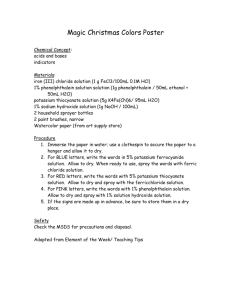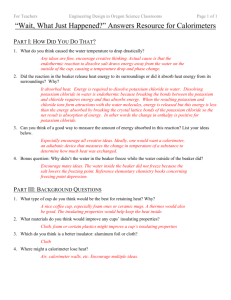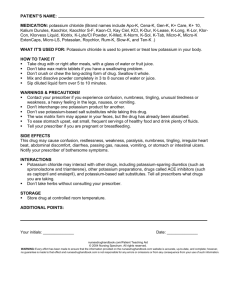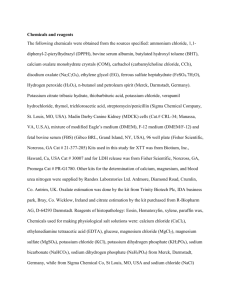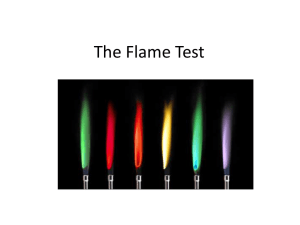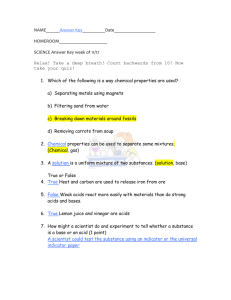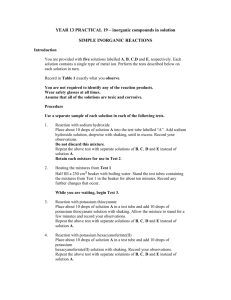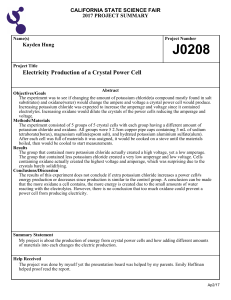1P L - Phys Chem changes - for absent students
advertisement
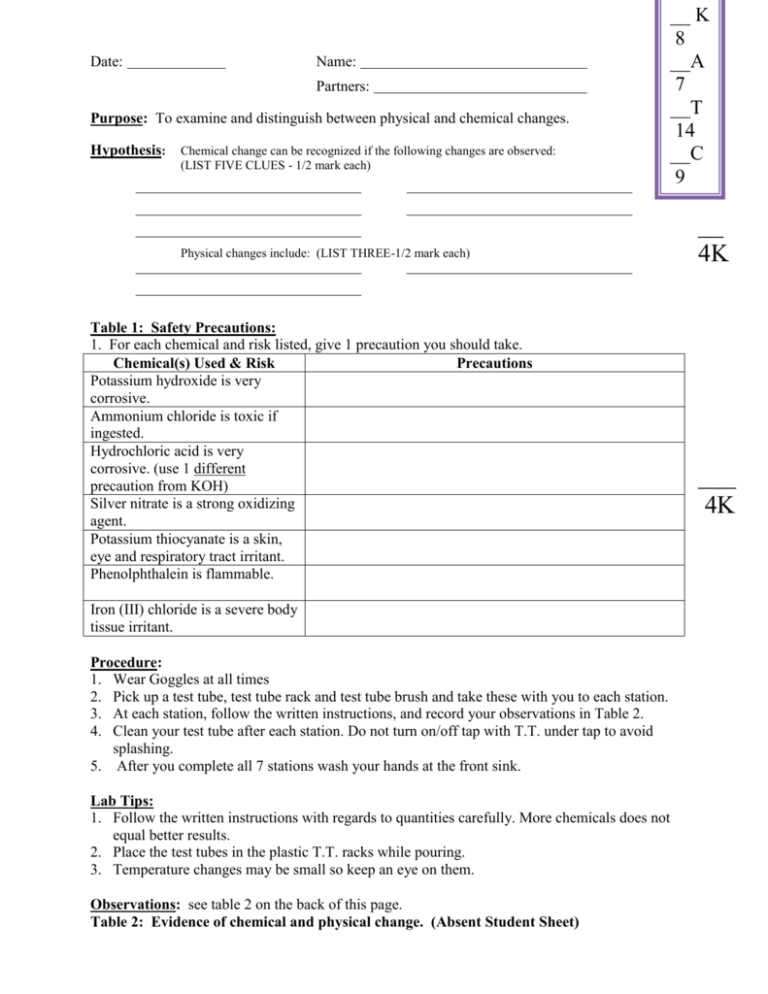
Date: Name: Partners: Purpose: To examine and distinguish between physical and chemical changes. Hypothesis: Chemical change can be recognized if the following changes are observed: (LIST FIVE CLUES - 1/2 mark each) Physical changes include: (LIST THREE-1/2 mark each) Table 1: Safety Precautions: 1. For each chemical and risk listed, give 1 precaution you should take. Chemical(s) Used & Risk Precautions Potassium hydroxide is very corrosive. Ammonium chloride is toxic if ingested. Hydrochloric acid is very corrosive. (use 1 different precaution from KOH) Silver nitrate is a strong oxidizing agent. Potassium thiocyanate is a skin, eye and respiratory tract irritant. Phenolphthalein is flammable. Iron (III) chloride is a severe body tissue irritant. Procedure: 1. Wear Goggles at all times 2. Pick up a test tube, test tube rack and test tube brush and take these with you to each station. 3. At each station, follow the written instructions, and record your observations in Table 2. 4. Clean your test tube after each station. Do not turn on/off tap with T.T. under tap to avoid splashing. 5. After you complete all 7 stations wash your hands at the front sink. Lab Tips: 1. Follow the written instructions with regards to quantities carefully. More chemicals does not equal better results. 2. Place the test tubes in the plastic T.T. racks while pouring. 3. Temperature changes may be small so keep an eye on them. Observations: see table 2 on the back of this page. Table 2: Evidence of chemical and physical change. (Absent Student Sheet) __ K 8 __A 7 __T 14 __C 9 __ 4K ___ 4K Starting substances Part Reactants Physical properties Observations after mixing etc. Inference physical? chemical? Evidence (as many as possible) (7A) water 1 Food colouring Potassium hydroxide 2 Food colouring dissolved in the water Solid, white pellets Water with phenolphthalein 3 Ammonium chloride Solid, white powder Water Sodium chloride (aq) 4 5 Silver nitrate (aq) Iron (III) chloride Potassium thiocyanate 6 Hydrochloric acid Crushed Tums Sugar 7 water transparent, colourless, liquid Transparent, orange, liquid Solid, white, small crystals transparent, colourless, liquid An increase in temperature was felt and a pink colour was seen ___ 14T A decrease in temperature was felt Small particles of solid appeared __ 7A The solution turned a very dark red Bubbles formed and eventually the Tums were gone The sugar dissolved in the water Discussion / Conclusion: (Answer on lined paper using full and complete sentences) 1. Which stations resulted in a physical change? Use 1 example from your lab to explain how you were able to determine they were physical changes? (2 marks) 2. Which stations resulted in chemical changes? Use 2 examples from your lab to explain how you were able to determine they were chemical changes? (3 marks) 3. List 2 physical changes that you observe at home. For each example give a reason.(2marks) 4. List 2 chemical changes that you observe at home. For each example give a reason.(2 marks) ___ 9C
